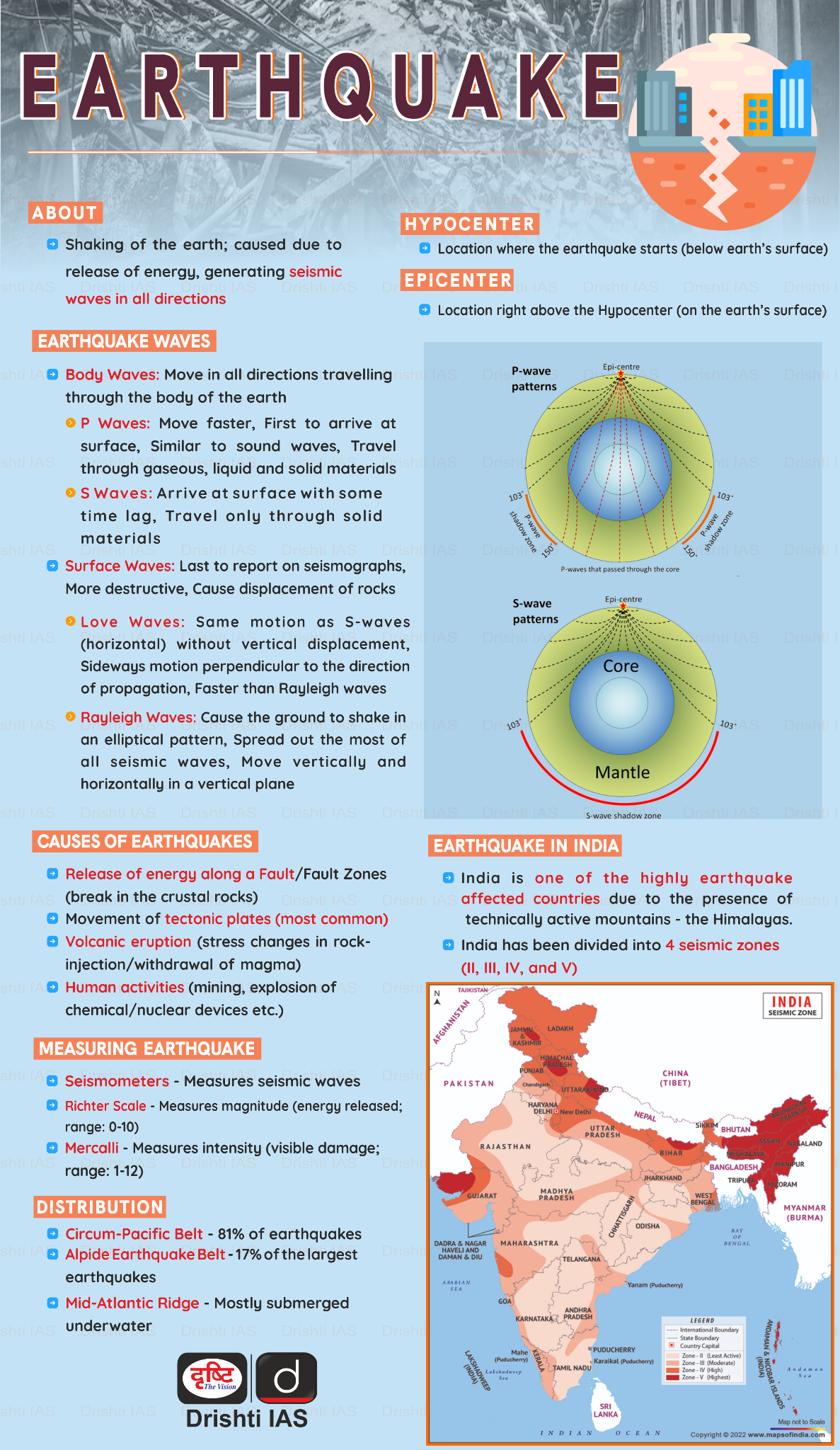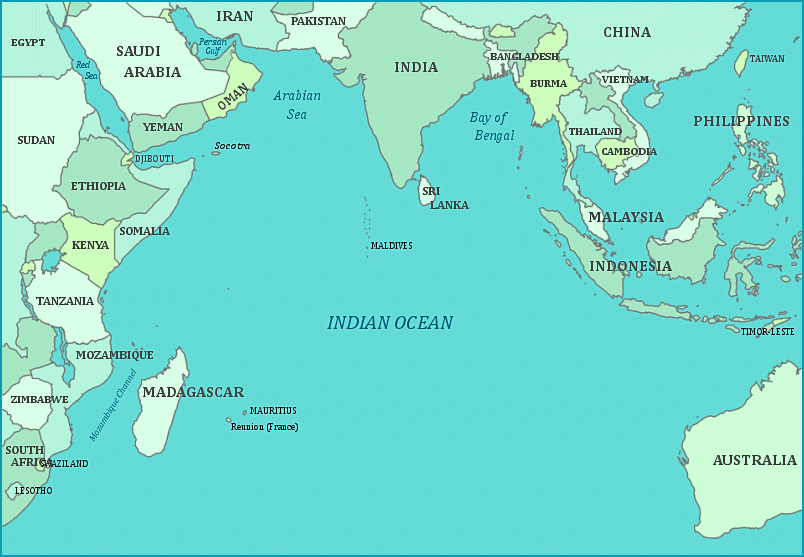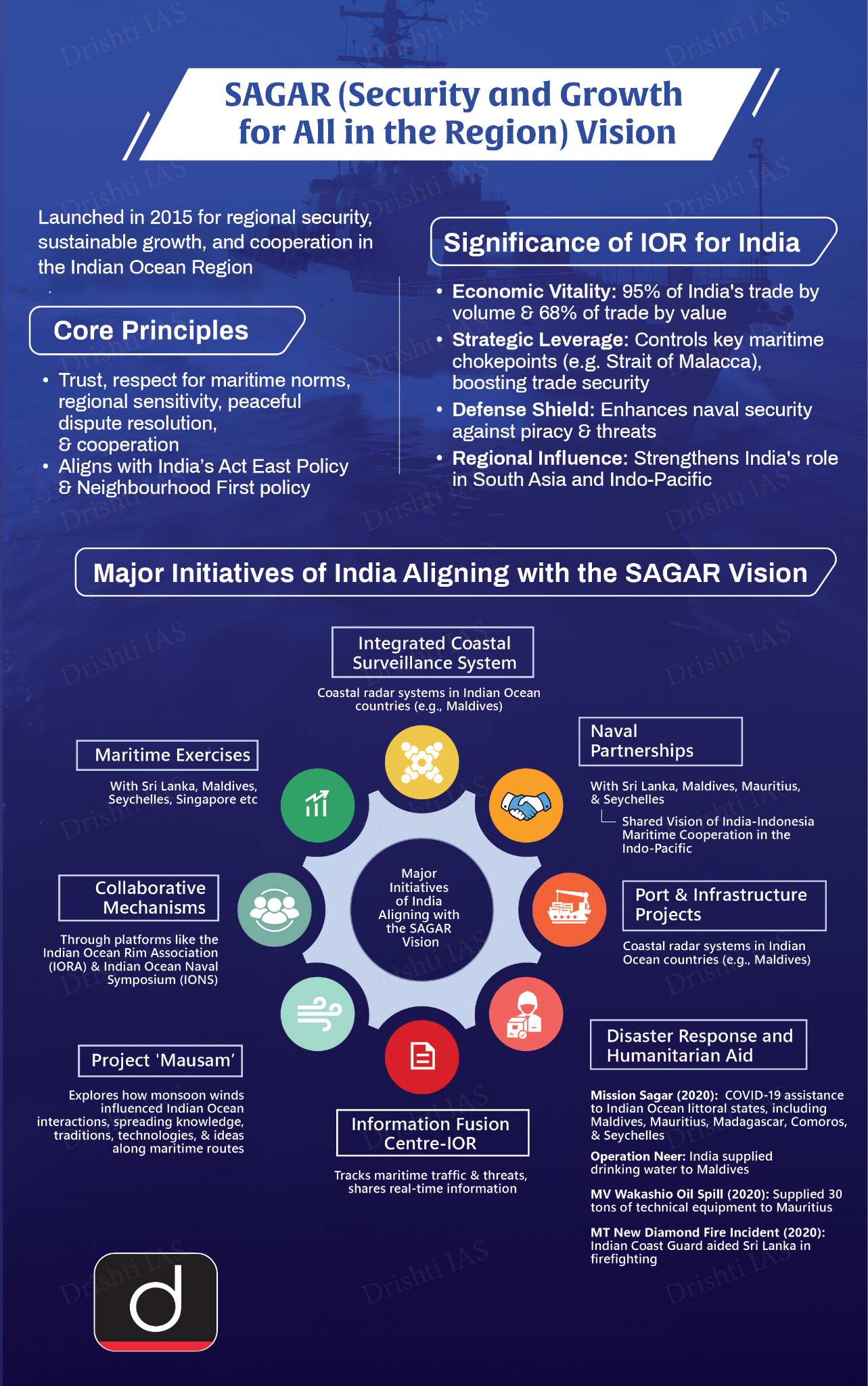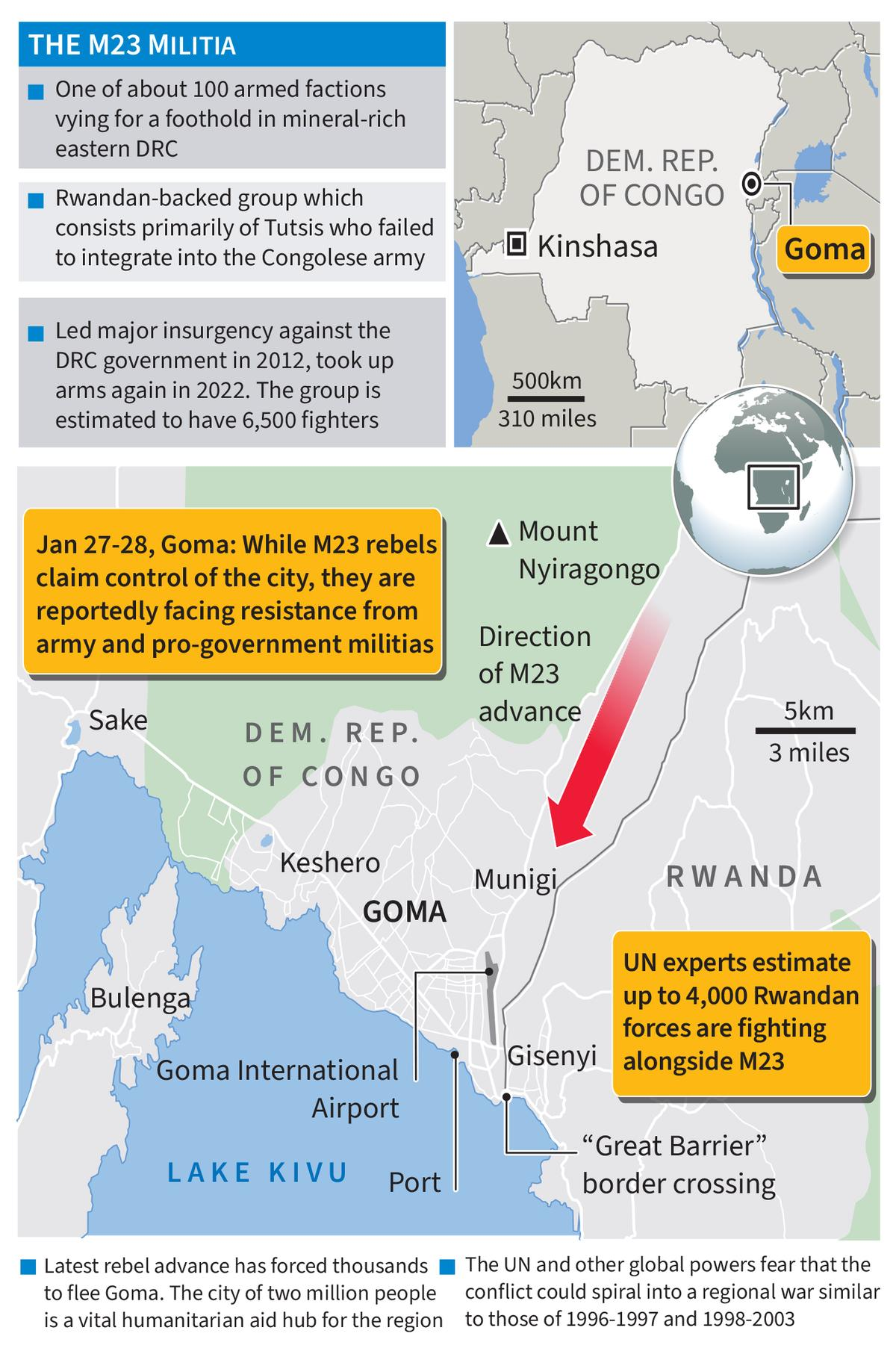Indian Polity
President’s Rule in Manipur
For Prelims: President’s Rule, Article 356, Kuki-Zo and Meitei, Article 355, Governor, Simple Majority, 44th Amendment Act, 1978, National Emergency, Election Commission, State Consolidated Fund
For Mains: Constitutional provisions regarding President’s rule and judicial interpretation.
Why in News?
The Centre has imposed the President’s rule in Manipur under Article 356 of the Indian Constitution and suspended the state assembly after the resignation of its Chief Minister.
How President’s Rule Can Help in Resolving Conflict in Manipur?
- Neutral Administration: Central rule will remove allegations of biased handling of ethnic violence, protecting both Kuki-Zo and Meitei communities.
- Governor-supervised central forces can prevent ethnic clashes and maintain law & order in the state.
- Electoral Stability: Prevents governance erosion by ending internal disputes within the ruling party.
- Rehabilitation: Ensures fair relief and rehabilitation for 60,000 displaced people in camps for over 20 months.
Click Here to Read: What led to the Manipur Unrest?
What is the President's Rule?
- About: President’s Rule refers to the suspension of a state government and its legislative assembly, placing the state under the direct control of the central government.
- It is imposed under Article 356 of the Indian Constitution.
- Constitutional Basis: Article 355 mandates the Central government to ensure that every state functions as per the Constitution.
- If a state government fails to function as per constitution, the Centre can intervene under Article 356 by imposing President’s Rule.
- President’s Rule is also known as State Emergency or Constitutional Emergency.
- Grounds for Proclamation:
- Article 356: The President can impose President’s Rule if a situation arises where the state government cannot function as per the Constitution. This can be done:
- On the recommendation of the Governor.
- On the President’s discretion, even without the Governor’s report.
- Article 365: If a state fails to comply with the Centre’s directions, the President can declare that its government cannot function constitutionally.
- Article 356: The President can impose President’s Rule if a situation arises where the state government cannot function as per the Constitution. This can be done:
- Parliamentary Approval: A proclamation of President’s Rule must be approved by both Houses of Parliament within two months.
- If President's Rule is declared when the Lok Sabha is dissolved, or if it dissolves within two months without approving the proclamation, it remains valid until 30 days after the Lok Sabha reconvenes, provided the Rajya Sabha approves it during this period.
- Approving or extending the President's Rule requires a simple majority in Parliament (majority of members present and voting).
- Duration: President’s Rule lasts six months initially and can be extended up to 3 years with Parliament’s approval every six months.
- The 44th Amendment Act, 1978 allows extending President’s Rule beyond one year only if:
- National Emergency is in force across India or in any part of the state.
- The Election Commission certifies that elections to the state assembly cannot be held due to difficulties.
- For extension of President’s Rule beyond 3 years, constitutional amendment is required. E.g., 67th Amendment Act, 1990 and 68th Amendment Act, 1991 was enacted to extend President’s Rule beyond 3 years in Punjab during Punjab insurgency.
- The 44th Amendment Act, 1978 allows extending President’s Rule beyond one year only if:
- Impacts: The President assumes extraordinary powers when the President's Rule is imposed.
- Executive Powers: The President takes over state functions, with the Governor administering on their behalf, assisted by the Chief Secretary and appointed advisors.
- Legislative Powers: The State Legislature is suspended or dissolved, with Parliament exercising its powers or delegating law-making authority to the President or a specified body.
- Laws made during the President's Rule remain in force unless repealed by the state legislature.
- Financial Control: The President can authorize expenditure from the State Consolidated Fund until it is approved by Parliament.
- Revocation: The President can revoke President’s Rule anytime without parliamentary approval.
What is the Supreme Court’s Stand on Imposition of President’s Rule?
- SR Bommai Case, 1994: The Supreme Court (SC) ruled that Article 356 is subject to judicial review, and state government’s dismissal must be based on a floor test, not the Governor’s opinion.
- Sarbananda Sonowal Case, 2005: Article 355's scope was broadened, enabling the Union to take wider actions to uphold state governance and constitutional principles.
- Rameshwar Prasad Case, 2006: The SC condemned the Bihar Assembly's dissolution without a floor test and criticized the political misuse of Article 356.
- Article 356 cannot be used to combat social evils like defection.
- Immunity under Article 361 does not prevent the court from reviewing the validity of actions.
Click Here to Read: Proper and Improper Use of Article 356
What are the Recommendations Regarding Imposition of President’s Rule?
- Sarkaria Commission (1987): It recommended using Article 356 sparingly, only as a last resort when all alternatives fail to resolve a state's constitutional breakdown.
- Punchhi Commission (2010): It proposed "localizing emergency provisions" under Articles 355 and 356, allowing Governor's rule localised areas, like a district or parts of it for up to 3 months.
- National Commission to Review the Working of the Constitution (NCRWC, 2000): Article 356 should not be deleted, but it must be used sparingly and only as a remedy of the last resort.
- President’s Rule may continue even without an emergency if elections cannot be held. Article 356 should be amended accordingly.
- Inter-State Council (Article 263): The Governor’s report recommending imposition of President’s rule should be detailed and explanatory.
- The state at fault should receive a warning before President's Rule is imposed.
- A special majority should be required for ratifying the proposal to impose President's Rule.
Click Here to Read: Sarkaria Commission, Punchhi Commission, Venkatachaliah Commission (NCRWC)
Conclusion
The imposition of President’s Rule in Manipur aims to restore stability by ensuring neutral governance, maintaining law and order, and facilitating political dialogue. However, past judicial rulings and commission recommendations highlight the need for cautious and minimal use of Article 356 to prevent political misuse and uphold federalism.
|
Drishti Mains Question: Discuss the constitutional provisions and judicial interpretations regarding the imposition of President’s Rule in India. |
UPSC Civil Services Examination, Previous Year Question (PYQ)
Prelims
Q. If the President of India exercises his power as provided under Article 356 of the Constitution in respect of a particular State, then (2018)
(a) the Assembly of the State is automatically dissolved.
(b) the powers of the Legislature of that State shall be exercisable by or under the authority of the Parliament.
(c) Article 19 is suspended in that State.
(d) the President can make laws relating to that State.
Ans: (b)
Mains
Q. Under what circumstances can the Financial Emergency be proclaimed by the President of India? What consequences follow when such a declaration remains in force? (2018)

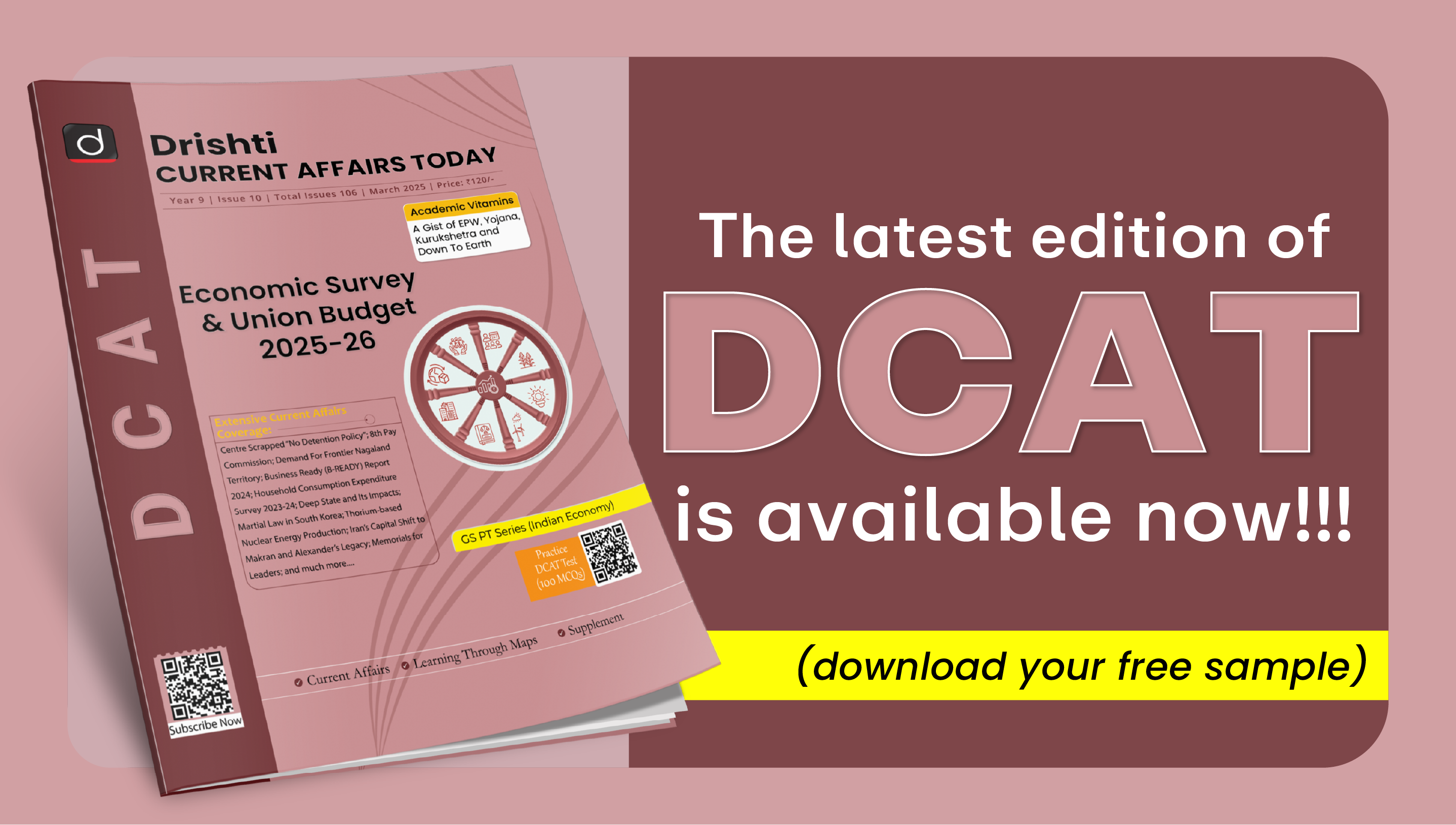
Agriculture
9th Anniversary of PMFBY
For Prelims: Pradhan Mantri Fasal Bima Yojana (PMFBY), Kharif, Oilseed Crops, Rabi, Horticultural Crops, Restructured Weather Based Crop Insurance Scheme (RWBCIS), MSP, FPOs.
For Mains: Key features of Pradhan Mantri Fasal Bima Yojana (PMFBY), challenges associated with PMFBY and way forward.
Why in News?
The year 2025 marks the 9th anniversary of the Pradhan Mantri Fasal Bima Yojana (PMFBY) that was launched in 2016 to protect farmers from crop losses due to unpredictable natural disasters.
- The Union Cabinet approved the continuation of the PMFBY and Restructured Weather Based Crop Insurance Scheme (RWBCIS) till 2025-26.
What is PMFBY?
- About: PMFBY is a central sector scheme that aims to provide financial protection to farmers in case of crop failure due to natural disasters, pests, or diseases.
- Key Features:
- Eligibility: All farmers including sharecroppers and tenant farmers growing the notified crops in the notified areas are eligible for coverage.
- Farmers’ participation is voluntary and non-loanee farmers make up 55% of the total coverage under PMFBY.
- Risk Coverage: PMFBY provides extensive coverage for various risks.
- Natural Calamities: Floods, droughts, cyclones, hailstorms, landslides, and unseasonal rains.
- Pests and Diseases: Pest infestations and plant diseases.
- Post-Harvest Losses: Covers losses within 14 days of harvest, mainly for crops stored in "cut and spread" conditions.
- Prevented Sowing: Farmers are eligible for indemnity claims up to 25% of the sum insured if sowing is prevented due to adverse weather.
- Affordable Premiums: It offers affordable premiums at rates of 2% for Kharif crops, 1.5% for Rabi crops, and 5% for yearly commercial or horticultural crops.
- The government covers the entire premium for farmers in the North-Eastern States, Jammu & Kashmir, and Himachal Pradesh.
- Technological Advancements:
- Satellite Imagery & Drones: For crop area estimation, yield disputes, and crop loss assessment.
- Crop Cutting Experiments (CCEs): The CCE-Agri App facilitates direct upload of crop yield data to the National Crop Insurance Portal (NCIP), ensuring transparency in loss assessments.
- Timely Compensation: PMFBY ensures claims are processed within two months of harvest, providing timely compensation to help farmers avoid debt traps.
- Eligibility: All farmers including sharecroppers and tenant farmers growing the notified crops in the notified areas are eligible for coverage.
- Global Scale: PMFBY is now the world’s largest crop insurance scheme in terms of farmers and hectares of land covered in 2023-24.
PMFBY and RWBCIS
- PMFBY relies on actual crop loss assessment to provide compensation to farmers for losses due to natural calamities, pests, or diseases. In contrast, RWBCIS compensates farmers based on deviations from predefined weather parameters such as rainfall, temperature, humidity, and wind speed.
- RWBCIS uses these weather parameters as a proxy for crop yields to estimate and compensate for deemed crop losses, without requiring direct field-level assessment.
What are the Challenges in Implementation of PMFBY?
- Delayed Claim Settlement: The claims settlement process is slow, lacks transparency, and leads to ongoing disputes over damage calculation and yield loss estimation.
- Geographical Disparities: States like Gujarat, Maharashtra, Andhra Pradesh, and Madhya Pradesh account for the majority of crop insurance claims, while states like Bihar, Assam, and the northeastern regions have seen low participation.
- Challenges in Premiums Subsidies: Delays in the release of subsidy payments have resulted in claims being pending for extended periods (12-18 months), affecting the credibility of the scheme.
- Post-Harvest Loss Issues: Post-harvest losses under PMFBY cover only physical damage (quantity), not quality losses like discoloration or rotting.
- Post-harvest loss coverage lasts up to 14 days. This short period complicates loss calculation and compensation.
- Data Constraints: The absence of reliable data on farm gate prices and yield estimation, along with inaccurate land records of tenant farmers, complicates damage calculations and scheme implementation.
- Segregation of Insurance and Disaster Relief: A key issue is separating insurance from disaster relief as insurance manages commercial risks while disaster relief serves as a safety net.
- This is especially challenging for high-value crops like horticultural products outside the MSP regime.
Way Forward
- Improving Claim Settlement: The government must ensure that insurers are fulfilling their obligations efficiently and are not simply using government-subsidized schemes to secure reinsurance commissions.
- A monitoring system should be established to ensure fair and timely claims processing.
- Addressing Small and Marginal Farmers: Encouraging community-based insurance models and FPOs could cover small and marginal farmers, reduce transaction costs, and provide a legal framework for resolving disputes.
- Addressing Low Penetration: The private sector, banks, and insurers can play a vital role in disseminating information about PMFBY, using agents and business correspondents (BCs).
- Incorporating New Risks: Insurance schemes should expand to cover risks like damage from wild animals. Farmers avoid growing crops such as pulses in regions where animals like Nilgai and elephants pose a threat.
|
Drishti Mains Question: Discuss the major challenges facing the Pradhan Mantri Fasal Bima Yojana (PMFBY) and suggest measures to improve the scheme’s coverage and efficiency. |
UPSC Civil Services Examination Previous Year Question (PYQ)
Prelims
Q. With reference to ‘Pradhan Mantri Fasal Bima Yojana’, consider the following statements: (2016)
- Under this scheme, farmers will have to pay a uniform premium of two percent for any crop they cultivate in any season of the year.
- This scheme covers post-harvest losses arising out of cyclones and unseasonal rains.
Which of the statements given above is/are correct?
(a) 1 only
(b) 2 only
(c) Both 1 and 2
(d) Neither 1 nor 2
Ans: (b)
Mains
Q. Given the vulnerability of Indian agriculture to vagaries of nature, discuss the need for crop insurance and bring out the salient features of the Pradhan Mantri Fasal Bima Yojana (PMFBY). (2016)


Governance
Mob Lynching
For Prelims: Bhartiya Nyaya Sanhita (BNS), 2023, NCRB, Tahseen Poonawala versus Union of India Case 2018
For Mains: Mob Lynching and Religious Fundamentalism: Challenges and Way Forward
Why in News?
The Supreme Court has declined to issue nationwide directives for uniform compensation and monitoring of mob lynching and cow vigilantism cases, citing feasibility concerns.
- However, it reaffirmed that its 2018 2018 Tehseen Poonawalla guidelines remain binding on all states under Article 141 of the Constitution.
What is Mob Lynching?
- About:
- Mob Lynching is a collective violence where a group unlawfully punishes individuals based on perceived wrongdoing, bypassing legal procedures.
- Cow Vigilantism is a violence in the name of cow protection, threatening secularism and social harmony, often driven by suspicion.
- Causes of Mob Lynching:
- Perceived Threat to Culture or Identity: Lynching occurs when individuals or groups are seen as threatening cultural, religious, or traditional values.
- Common triggers include inter-caste/inter-religious relationships, food habits, or customs perceived as challenging societal norms.
- Rumors: Fake news and rumors, often spread via social media and word of mouth, can incite mob violence.
- Socio-Political Tensions: Tensions from land disputes, resource competition, and economic disparities can escalate into violence, often exploited for political gains.
- Communal Divisions: Historical religious, ethnic, or communal tensions often act as catalysts for lynching incidents.
- Moral Vigilantism: Self-proclaimed groups enforce their interpretation of social norms through violence, targeting individuals they consider violators.
- Perceived Threat to Culture or Identity: Lynching occurs when individuals or groups are seen as threatening cultural, religious, or traditional values.
What are the Legal Provisions Related to Mob Lynching in India?
- Bhartiya Nyaya Sanhita (BNS), 2023:
- Section 103(2): Mob Lynching as Murder
- When a group of 5 or more persons acting in concert commits murder on grounds like race, caste, community, sex, place of birth, language, or personal belief.
- Punishment: Death penalty or life imprisonment along with a fine.
- Section 117(4): Grievous Hurt by a Mob
- When a group of 5 or more persons acting in concert causes grievous hurt on similar discriminatory grounds.
- Punishment: Imprisonment up to 7 years and fine.
- Section 103(2): Mob Lynching as Murder
- SC Directions in Tehseen Poonawalla Case, 2018:
- SC strongly condemned mob violence, stating that no individual or group can take the law into their own hands.
- The Court warned that unchecked lynching could become "the new normal" and emphasized that mob justice has no place in a civilized society.
- It stated that the state has a duty to protect citizens and prevent targeted violence.
- It cited American legal precedents to reinforce that mob justice undermines the rule of law.
- SC Directions for Mob Lynching:
- Strict Action Against Incitement: Automatic FIRs under IPC Section 153A (section 196 in BNS) (promoting enmity between different groups) for those spreading hate speech or fake news.
- Preventive Measures: States to appoint a senior police officer as a nodal officer in each district.
- Identify vulnerable areas and increase police patrolling.
- Social media platforms must curb hate speech and fake news.
- Punitive and Remedial Measures: Fast-track courts in every district to resolve cases within 6 months.
- Strict punishment, including life imprisonment, for lynching crimes.
- Disciplinary action against negligent officials.
- Victim Compensation: States to develop a compensation scheme based on injury severity, livelihood loss, and medical expenses.
- Accountability of Officials: Action against officials failing to prevent lynching.
- Monitoring and Legislative Measures: States must submit periodic reports on mob lynching incidents.
- Parliament urged to enact a national anti-lynching law (pending), though Rajasthan and Manipur have enacted state laws.
- SC strongly condemned mob violence, stating that no individual or group can take the law into their own hands.
What are the Challenges in Tackling Mob Lynching?
- Legal Gaps and Weak Enforcement: India lacks a specific anti-lynching law, leading to inconsistent action against such crimes. Though the SC has set guidelines to prevent mob violence, enforcement remains weak.
- Communal Targeting and Bias: Lynching incidents disproportionately affect weaker communities. This deepens communal divisions and raises concerns about systemic discrimination and biased law enforcement.
- Data Deficiency and Policy Gaps: The NCRB stopped recording separate data on mob lynching and hate crimes after 2017, making it hard to gauge the extent of the issue leading to challenges in formulating effective measures to prevent such violence.
- Social Media & Misinformation: Fake news and inflammatory content on digital platforms incite violence, making regulation and accountability difficult.
Way Forward
- National Legislation: A dedicated anti-lynching law with stringent penalties and swift trials is essential for uniformity and deterrence.
- Stronger Law Enforcement & Judiciary: Police reforms must ensure accountability in preventing and responding to mob violence.
- Special investigation teams (SITs) and fast-track courts should be established to ensure speedy trials and justice for victims.
- Public Awareness & Media: Government and civil society must counter mob violence through awareness, ethical journalism, and curbing misinformation.
- Tech Regulation & Cybersecurity: Strengthen digital monitoring, curb hate speech, and hold social media accountable while promoting digital literacy.
- Community Engagement: Address socio-economic disparities, promote interfaith dialogue, and establish grievance redressal to curb mob violence.
|
Drishti Mains Question: Mob lynching threatens the rule of law and social harmony in India. Analyze its causes and suggest legal and policy measures to address the issue. |

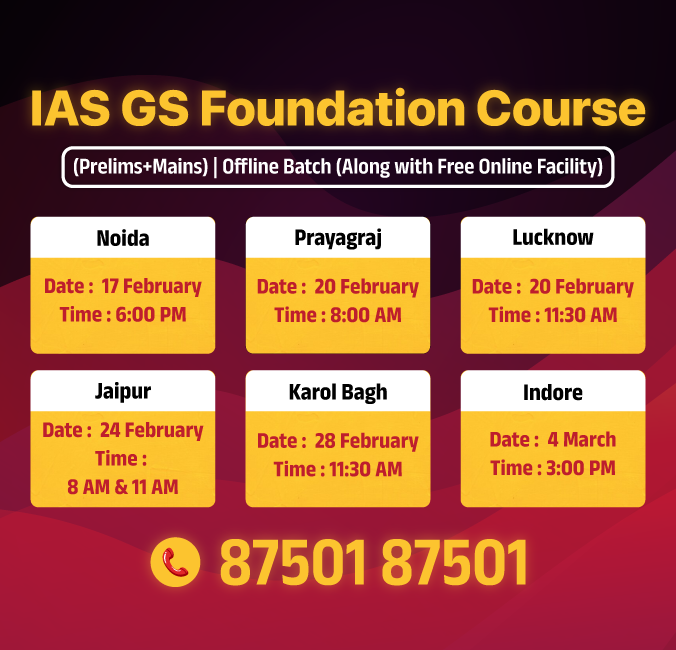
Facts for UPSC Mains
Delhi Earthquake 2025
Why in News?
An earthquake of 4.0 magnitude struck Delhi in February, 2025 that was caused due to hydro fracturing beneath the Aravalli-Delhi Fold Belt.
What are the Key Facts Regarding Delhi Earthquake 2025?
- Seismic Origin in Delhi: It had an epicenter within the city (not in Himalayas) at a shallow depth of 5 km resulting in shallow earthquake, sending more seismic waves to the surface and creating more tremor at the surface.
- Epicenter is the point on the Earth's surface that is directly above the focus or hypocenter (where the earthquake originates within the Earth's crust).
- Shallow earthquakes are between 0 and 70 km deep, intermediate earthquakes, 70 - 300 km deep, and deep earthquakes, 300 - 700 km deep.
- Seismic Zone Classification: Delhi lies in Zone 4 of India’s earthquake hazard map, indicating high seismic risk with MSK-8 intensity (Zone 5, most vulnerable, corresponds to MSK-9 intensity).
- The MSK (Medvedev-Sponheuer-Karnik) scale is a measure of intensity, rather than strength (energy released) that is described by magnitude.
- Hydro Fracturing: The earthquake was caused by normal faulting (with vertical rock movement) and hydro fracturing was identified as a key trigger of this earthquake.
- Beneath Delhi, aquifers and underground water channels erode rock formations, causing fractures that occasionally release stress as seismic waves.
- Aravalli-Delhi Fold Belt: Delhi lies in the Aravalli-Delhi Fold Belt, with deformed rock layers folded millions of years ago.
- While tectonic activity has reduced, some active faults still cause occasional mild earthquakes.
- Difference from Himalayan Earthquakes: Himalayan earthquakes result from tectonic plate movement i.e., subduction of the Indian plate under the Eurasian plate, causing intense stress and large quakes.
- The Delhi earthquake was caused by localized geological stress rather than tectonic plate movement.
- Role of Local Faults: Several local faults, such as the Mahendranagar Fault and Sohana Fault, exist in the Delhi region that can create earthquakes upto 6 magnitude.
- Sounds During Earthquake: Earthquakes do generate low-frequency sound waves, but these are usually not heard.
- The sounds reported during the quake may have been caused by vibrations in buildings and structures, not the quake itself.
- Large Earthquake in Delhi: A magnitude 8 earthquake along the Main Central Fault (MCF) in the Himalayas could trigger large quakes in Delhi, as the Yamuna's alluvial plains are less able to absorb the energy than harder rocks.
- MCF lies between the Greater Himalayas in the north from lesser Himalayas in the south.
|
Drishti Mains Question: Analyze the role of hydro fracturing in the occurrence of earthquakes. How do these differ from the causes of earthquakes in the Himalayan region? |
UPSC Civil Services Examination Previous Year Question (PYQ)
Mains
Q. Discuss about the vulnerability of India to earthquake related hazards. Give examples including the salient features of major disasters caused by earthquakes in different parts of India during the last three decades. (2021)
Q. The frequency of earthquakes appears to have increased in the Indian subcontinent. However, India’s preparedness for mitigating their impact has significant gaps. Discuss various aspects. (2015)


Important Facts For Prelims
8th Indian Ocean Conference
Why in News?
India’s External Affairs minister S Jaishankar represented India in the 8th Indian Ocean Conference (IOC) held in Muscat, Oman with the theme ‘Voyage to New Horizons of Maritime Partnership’.
What is the Indian Ocean Conference?
- About: IOC is an annual summit bringing together leaders, policymakers, and experts from the Indian Ocean Region (IOR) to discuss geopolitical, economic, and security challenges.
- It was established by the India Foundation (India based think tank) in 2016 in Singapore with participation from 30 countries.
- Objective: It aims to unite key states and maritime partners in the IOR to enhance regional cooperation under the vision of Security and Growth for All in the Region (SAGAR).
What is the Indian Ocean Region?
- About: IOR refers to the region around the Indian Ocean, including the countries that border it.
- It spans from the Strait of Malacca and western Australia in the east to the Mozambique Channel in the west.
- It covers about 20% of the world’s water surface, a quarter of the world’s landmass, and three-quarters of global oil reserves.
- Strategic Importance:
- Economic Significance: Approximately 80% of global maritime oil and 80% of India’s oil imports pass through the Indian Ocean annually.
- Key Choke Points:
- Strait of Malacca (connects Southeast Asia and the Pacific Ocean to the Indian Ocean).
- Strait of Hormuz (connects the Persian Gulf to the Indian Ocean; crucial for global oil transport).
- Bab-el-Mandeb Strait (connects the Red Sea and the Indian Ocean, impacting trade with Africa and the Middle East).
- Mozambique Channel (important for goods transiting from the Cape of Good Hope to the Middle East and Asia).
- Military Significance: It is home to key naval bases and faces maritime security concerns like piracy, illegal fishing, and territorial dispute.
- Critical Minerals: The Central Indian Ocean Basin (CIOB) is estimated to hold vast reserves of nickel, copper, cobalt, and manganese.
Click Here to Read: What are the Major Challenges Related to the Indian Ocean Region?, How to Deal with Challenges in the Indian Ocean Region?
UPSC Civil Services Examination, Previous Year Question (PYQ)
Prelims
Q. Consider the following in respect of Indian Ocean Naval Symposium (IONS): (2017)
- Inaugural IONS was held in India in 2015 under the chairmanship of the Indian Navy.
- IONS is a voluntary initiative that seeks to increase maritime co-operation among navies of the littoral states of the Indian Ocean Region.
Which of the above statements is/are correct?
(a) 1 only
(b) 2 only
(c) Both 1 and 2
(d) Neither 1 nor 2
Ans: (b)
Q. With reference to ‘Indian Ocean Rim Association for Regional Cooperation (IOR-ARC)’, consider the following statements: (2015)
- It was established very recently in response to incidents of piracy and accidents of oil spills.
- It is an alliance meant for maritime security only.
Which of the statements given above is/ are correct?
(a) 1 only
(b) 2 only
(c) Both 1 and 2
(d) Neither 1 nor 2
Ans: (d)


Facts for UPSC Mains
India’s Trade with Afghanistan and Nepal
Why in News?
India recorded an unusual trade deficit with Afghanistan in the year 2023-24.
- In another development, soybean oil imports from Nepal surged 14-fold (April-November 2024), possibly due to rule-of-origin (RoO) violations.
What are Key Highlights of India Trade with Afghanistan and Nepal?
- Afghanistan:
- Bilateral Trade Trends: India's exports to Afghanistan fell from USD 825.78 million in 2020-21 to USD 355.45 million in 2023-24, while imports rose from USD 509.49 million in 2020-21 to a record USD 642.29 million in 2023-24.
- Before this, the last time India saw a trade deficit (USD 0.73 million) with Afghanistan was in 2000-01.
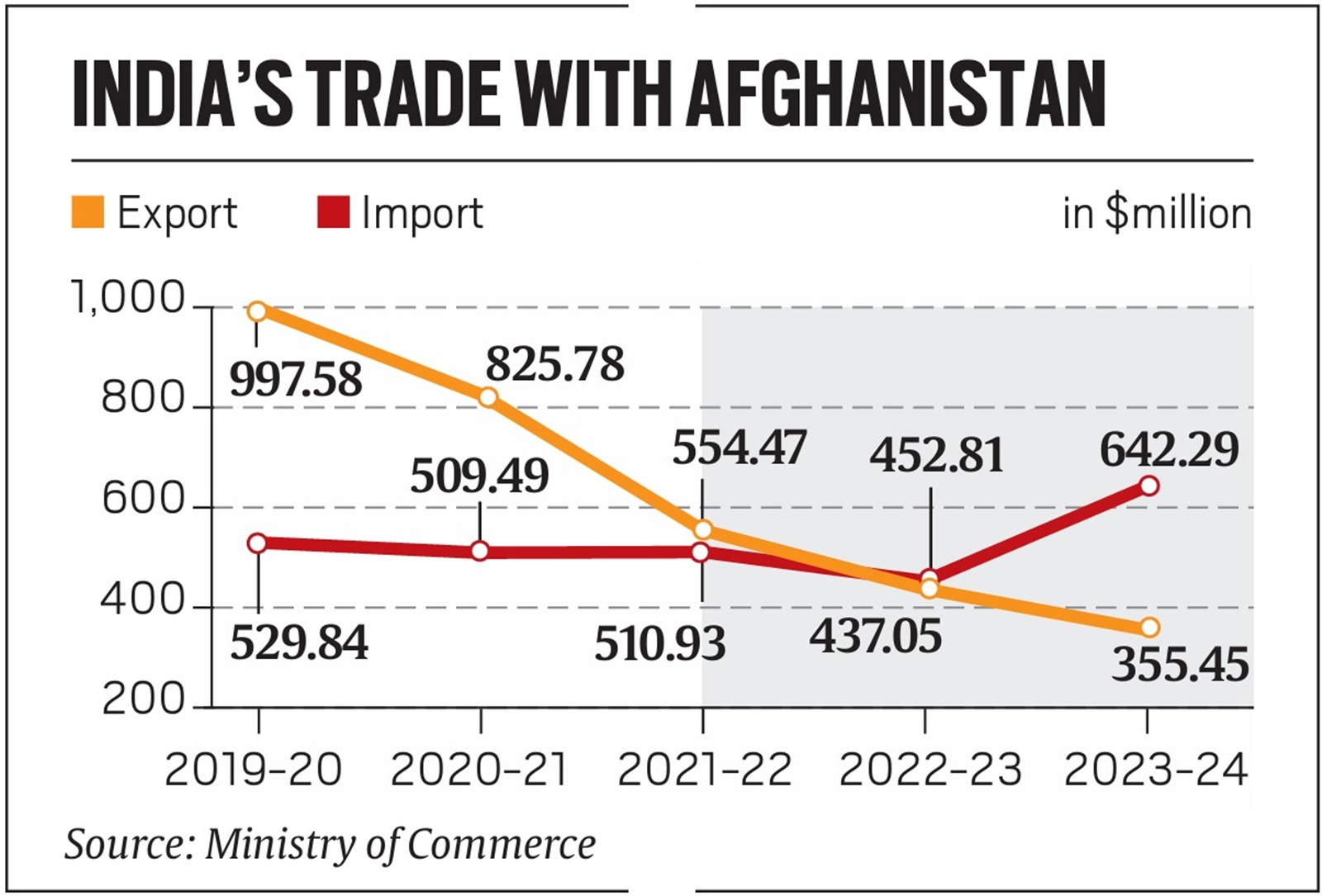
- Before this, the last time India saw a trade deficit (USD 0.73 million) with Afghanistan was in 2000-01.
- Imports: Agricultural products like figs, asafoetida, raisins, apples, garlic, saffron, almonds, onions, pomegranates, and walnuts dominate.
- Exports: Mainly medicines, vaccines, soybean meal, and garments.
- Key Products: In 2023-24, Afghanistan was the primary supplier of asafoetida, raisins, and garlic.
- In 2023-24, Afghanistan became India's 3rd-largest apple supplier, (surpassed Italy and the US) after Iran and Turkey.
- Bilateral Trade Trends: India's exports to Afghanistan fell from USD 825.78 million in 2020-21 to USD 355.45 million in 2023-24, while imports rose from USD 509.49 million in 2020-21 to a record USD 642.29 million in 2023-24.
- Nepal: India’s total soybean oil imports rose by 19% to nearly USD 3 billion (April-November 2024) from USD 2.5 billion in 2023.
- Rule-of-Origin Violation: Nepal imports 98% crude edible oil, refines it, and exports it to India indicating duty structure exploitation.
- Nepal enjoys a 30% tariff advantage over other exporters due to the Nepal-India Treaty of Trade (2009), allowing duty-free exports to India.
- Rule-of-Origin Violation: Nepal imports 98% crude edible oil, refines it, and exports it to India indicating duty structure exploitation.
Note: Rules of Origin (RoO) are the criteria used to determine the country of origin of a product in international trade.
- RoO helps prevent "trade deflection," where goods produced in one country are routed through another country to take advantage of lower tariffs.
- RoO is governed by the World Trade Organization (WTO) through its Agreement on Rules of Origin.
Nepal-India Treaty of Trade 2009
- Duty-Free Access: It provides non-reciprocal duty-free access for all Nepali-manufactured goods except for a negative list (e.g., cigarettes, alcohol, cosmetics).
- Annual Quotas: It had been prescribed only for duty-free exports to India for four sensitive items i.e., vegetable fats, acrylic yarn, copper products, and zinc oxide.
- Trade Mechanism: India-Nepal bilateral trade is conducted in Indian rupees, with the exchange rate fixed at 1.6 Nepali rupee per Indian rupee.
UPSC Civil Services Examination, Previous Year Questions (PYQs)
Prelims
Q. Consider the following countries: (2022)
- Azerbaijan
- Kyrgyzstan
- Tajikistan
- Turkmenistan
- Uzbekistan
Which of the above have borders with Afghanistan?
(a) 1, 2 and 5 only
(b) 1, 2, 3 and 4 only
(c) 3, 4 and 5 only
(d) 1, 2, 3, 4 and 5
Ans: (c)


Rapid Fire
Arabian Leopards
A study published on World Arabian Leopard Day (10th February 2025) confirmed the presence of the Arabian leopard in Oman’s Nejd plateau, contrary to earlier beliefs of local extinction due to hunting and habitat loss.
Arabian Leopard (Panthera pardus nimr):
- Key Characteristics: It is among the smallest leopard subspecies, with males weighing 30-40 kg and females 25-35 kg.
- It has pale buff-colored fur with small, closely spaced rosettes.
- Habitat & Population: Native to the Arabian Peninsula. Found in isolated pockets across Saudi Arabia, Oman, Yemen, and the UAE.
- The global wild population is estimated to be 100-120 individuals, with the largest group in southern Oman.
- IUCN Status: Critically Endangered
- Threats:
- Habitat loss due to urbanization, farming, and overgrazing.
- Poaching and illegal wildlife trade.
- Declining prey populations, leading to food scarcity.
Nejd Plateau:
- The Nejd Plateau in Dhofar, Oman, is a dry region with plateaus, wadis, and low cliffs.
- Wadis are low-lying valleys that are usually dry, except during the rainy season
Leopard Population in India (2024):
- Total: 13,874 (1.08% annual growth since 2018).
- Highest population: Madhya Pradesh, followed by Maharashtra, Karnataka, and Tamil Nadu.
- Conservation Status: IUCN Red List (Vulnerable), CITES (Appendix-I) and Indian Wildlife (Protection) Act (Schedule-I).
Read More: Status of Leopards in India 2022


Rapid Fire
High-Entropy Alloy for Hydrogen Production
Researchers have developed a high-entropy alloy (HEA) catalyst for water electrolysis, enhancing hydrogen production while reducing dependence on costly materials like platinum for clean energy generation.
- Alloys & High-Entropy Alloys (HEAs): Alloys are metallic substances composed of 2 or more elements, while HEAs are advanced metallic alloys materials with 5 or more elements mixed in equal or similar proportions.
- HEA catalyst consists of platinum, palladium, cobalt, nickel, and manganese.
- HEAs possess high strength, corrosion, and wear resistance, ensuring durability.
HEA Role in Electrolysis:
- In electrolysis, a catalyst (like platinum) is used which reduces the minimum amount of energy required to start a chemical reaction (activation energy), accelerating water splitting into hydrogen and oxygen.
- The HEA catalyst reduces platinum use by 7 times improving efficiency over pure platinum, and remains stable for 100+ hours in alkaline seawater, enabling cost-effective hydrogen production.
Read More: Green Hydrogen and Carbon-Neutral Future


Rapid Fire
DRC Conflict and M23 Militia
The ongoing conflict in the Democratic Republic of Congo (DRC) has escalated with the M23 militia, backed by Rwanda, capturing the mineral-rich city of Goma.
- The conflict has resulted in 2,900 deaths, displaced nearly 700,000 people, and spread to South Kivu province, a region rich in resources.
- M23 Formed in 2012 after the failure of a 2009 peace agreement between the DRC government and Tutsi-led National Congress for the Defence of the People (CNDP).
- M23 claims to protect Tutsis in DRC, while Democratic Forces for the Liberation of Rwanda (FDLR) fights for Hutus.
- Hutu-Tutsi conflicts have existed since Belgian and German colonial rule, with Tutsis favored in governance.
- Rwandan Genocide (1994) was a mass killing of the Tutsi ethnic group by Hutu extremists in Rwanda.
- The DRC supplies 40% of the world’s Coltan, used to make Tantalum capacitors for electronics due to its high charge retention.
Read More: Conflict in the Democratic Republic of Congo (DRC)


Rapid Fire
4th India-EU Urban Forum
The 4th India-EU Urban Forum, held in New Delhi has strengthened India-EU collaboration on sustainable urban development.
India-EU Urban Forum:
- About:
- It is a high-level platform for dialogue and collaboration between India and the European Union (EU) on smart and sustainable urbanization, established as part of the 2017 Joint Declaration on Partnership for Smart and Sustainable Urbanization.
- Objective:
- It facilitates discussions among officials, experts, and stakeholders to exchange best practices, policies, and innovative solutions for sustainable urban development.
- Focus Areas:
- Urban Alliance & Integrated Approaches, Innovation & Circularity, and Inclusive Urban Mobility.
- It aligns with the EU's Global Gateway Strategy (for sustainable investments) and India’s urban development missions (such as Smart Cities Mission).
- Support to India:
- Since 2017, Europe has supported 40+ Indian cities in climate-smart development, mobility, waste management, and climate action and invested over INR 9000 crores.
Government Initiatives Related to Urban Areas:
Read More: Revitalizing India’s Urban Landscape



